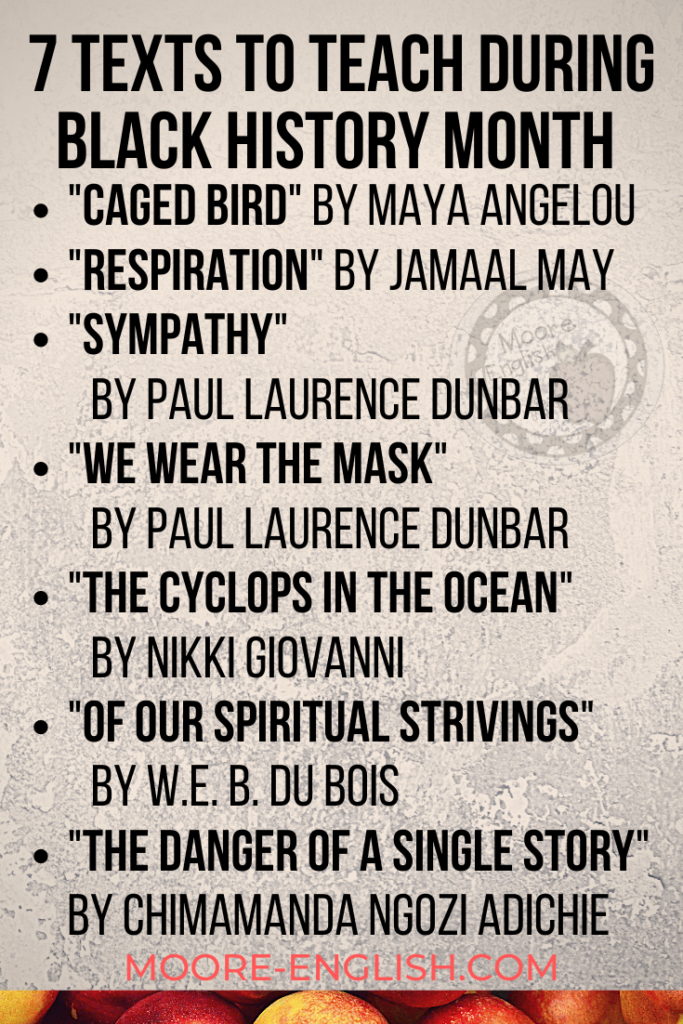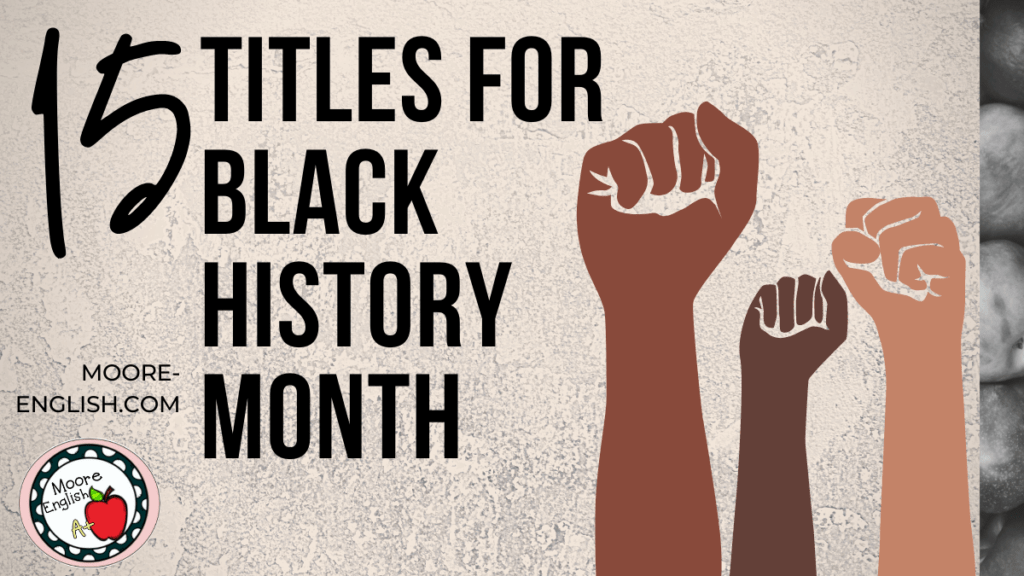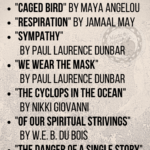I’m in the middle of re-watching Grey’s Anatomy (and here are some old spoilers, but be warned nevertheless). In her last season, Cristina Yang, played by the incomparable Sandra Oh, clashes with her best friend Meredith Grey. Their conflict is multifaceted, but the part that stuck with me is Cristina’s affirmation that she doesn’t want to be a mother and that she doesn’t want to be a wife. She wants to be a surgeon, and she wants to be the best.
I think that resonated with me because I want to be the best teacher I can be (although, I admit, I will never be as hardcore as Cristina Yang). Furthermore, part of being the best teacher I can be is reconciling with the role of racism in education and working to dismantle racism in the classroom. It’s a work in progress. Ultimately, I’m learning a lot, and I have to give credit to the blogs and teachers I follow who have been consistently providing insight, challenging beliefs and traditions, and promoting change. Here are a few resources that I stuck with me this month:
- Firstly, on Instagram, Naomi @readlikearockstar, Julia @historyfromthemiddle, and Felicity @thehappyteacherspalette have each posted something recently that resonated. In particular, each has posted something in the last month that helped me to know what I didn’t know or, more accurately, to know what my privilege prevented me from knowing.
- Similarly, on the We Need Diverse Books blog, Gholdy Muhammad posted this article with questions about privilege and power that I instantly added to my lesson plans.
- Thirdly, in the Smithsonian Learning Lab, Maria Fernanda Garcia posted this collection focused on culturally responsive teaching.
For Black History Month, I wanted to highlight some great options for secondary ELA. Each piece comes from a Black writer working, speaking, and writing from a unique perspective. Check out these suggestions!
This post this post may contain affiliate links. Please read the Terms of Use.
Classic Poetry for Black History Month
Because poetry is so short, this is often the easiest way to include Black authors in your class. Poetry of all stripes lends itself to synthesis and provides a great complement to any novel study.
One of the first poems my juniors read is “On Being Brought from Africa to America” by Phillis Wheatley. We read it early in the year during our study of the American Enlightenment, but this short piece would fit beautifully in Black History Month. Since this poem still resonates hundred of years later, it disabuses students of the notion that racism is a relic. Read the full text here.
Additionally, “Before a Painting” by James Weldon Johnson (read it here) and “Summer Morn in New Hampshire” by Claude McKay (read it here) are poems of beauty and silence. Both poems feature key structural elements.
-Further, “Caged Bird” by Maya Angelou and “Sympathy” by Paul Laurence Dunbar are paired texts from my To Kill a Mockingbird unit. The central symbol in Angelou’s poem is an allusion to Dunbar’s poem. In other words, Angelou is making an allusion to her predecessors and ancestors. By alluding to Black history rather than to white history, Angelou makes a powerful statement that seems fitting for Black History Month. Check out my tools for teaching “Caged Bird” here.
-Similarly, Dunbar’s use of symbolism provides powerful commentary on privilege and freedom. In particular, the image of a cage is a good point for discussion. Ask students what kinds of modern cages they recognize–perhaps systems that festhize Black hair or create economic inequality. Check out my resources for teaching this poem here.
-“We Wear the Mask” by Paul Laurence Dunbar: Before my students ever learn Du Bois’ concept of “double consciousness, they explore the mask symbol central to Dunbar’s poem. They discuss where society asks Black men and women to wear masks. And in this discussion it becomes clear why this poem is a fitting piece for Black History Month. Check out my resources for this poem here.
-Finally, “Those Winter Sundays” by Robert Hayden is such a celebrated, notable piece of poetry. It’s in every literature textbook from which I’ve taught. Like many of the poems mentioned here, this text lends itself to conversations at the literal, figurative, and emotional level. Check it out here.
Contemporary Poetry
-“The Cyclops in the Ocean” by Nikki Giovanni: This text originally came to me as I was planning to teach The Odyssey. However, this text lends itself to discussions of economic inequality and privilege. In the case of The Odyssey, trials befall Odysseus. But Giovanni’s poem suggests that trials often cause the most suffering for those living on the margins. This poem is hard to find online, so check out this post to get resources for this poem for free.
-Similarly, Audre Lorde’s “A Litany for Survival” also deals with life on the margins, beginning with “For those of us who live at the shoreline.” It’s a text that explores the intersection of fear, survival, and empowerment. Lorde’s words are also incredibly relevant and impossible for forget. Read the full text here.
-“Respiration” by Jamaal May: This poem is the most-recent on this list. It’s also the newest poem for me. Finally, it’s the most subtle piece on this list. May’s description of breathing and breaking and shrinking is deceptive and awesome all at once. Check out my resources for this poem here.
-Like “Caged Bird” and “Sympathy,” “Mercy” by Rudy Francisco and “Allowables” Nikki Giovanni share a similar subject and symbol. Likewise, they also deal with feeling of being trapped and cornered. Check out my resources for teaching these poems.
-“Slam, Dunk, & Hook” by Yusef Komunyakaa is one of the those poems that “tricks” my students. At first, they’re sure the poem is about basketball, which gets them hooked (see what I did there?). By the end of the lesson, though, they’ve moved on to far more important topics. Read it here.
Black History Month Nonfiction and Fiction
–The Souls of Black Folk by W.E.B. Du Bois: In Chapter 1 “Of Our Spiritual Strivings,” Du Bois defines “double consciousness.” From code switching to the acknowledgement of the triple consciousness, the demands of the double consciousness are still prevalent. This text is a challenging read but a clear requirement for Black History Month. Check out my resources for Chapter 1 here.
-“The Danger of the Single Story” by Chimamanda Ngozi Adichie: Sometimes Du Bois’ writing can be dense for students. However, Adichie’s “single story” has a lot in common with double consciousness. These texts make a great complement to one another and a good pairing for Black History Month. Check out my resources for this great Ted talk here.
-“Girl” by Jamaica Kincaid is my favorite short story by a Black author. Its structure and fierce narrator make it an unforgettable text. Plus, it’s a good tool for literary criticism, which could absolutely be part of your Black History Month instruction. Read the full text here.
While February is Black History Month, these texts can be used all year long. Similarly, one month is not sufficient representation for Black voices, so I encourage you to consider the diversity in your classroom instruction and library. This is something I’m consistently working to improve in my own classroom. You can find all the texts from this post in my Black History Month Literature Bundle.









